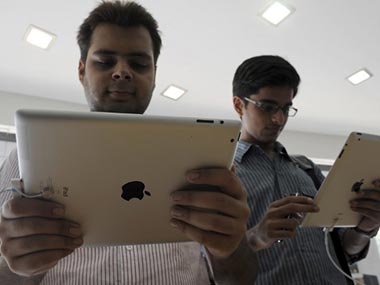New York: India is mulling sweeping curbs on the import of foreign technology products ranging from laptops, Wi-Fi devices to sophisticated wireless telecom equipment. The proposed move is aimed at bringing pressure on foreign firms to increase manufacturing in India.
The rules are in draft form and the government could still choose to scale back its plan. But the proposed regulations, which were reviewed by The Wall Street Journal, would create an expansive “Buy India” mandate.
To comply with the rules, foreign companies would have to set up factories in India, possibly as soon as April or significantly expand their existing manufacturing ability.
“If implemented, the rules could wreak havoc on the business plans of a wide range of US and other foreign firms, including hardware-makers Cisco Systems Inc. and Dell Inc; services companies such as International Business Machines Corp; and telecom-gear suppliers such as Nokia Siemens Networks BV and Telefon AB LM Ericsson,” reported the Journal.
[caption id=“attachment_580601” align=“alignleft” width=“380”]  Representational Image. AFP[/caption]
Nokia-Siemens and Ericsson already do some manufacturing in India, but the move would be a blow for Cisco and IBM, which have research facilities but no factories in India.
In addition to the plant requirement, The Wall Street Journal reported that high-tech companies would have to source a large percentage of such parts as semiconductors locally to meet requirements that “value” is being added in India.
Experts say India has a nascent semiconductor market, making that very difficult. The newspaper said the policy would also penalise companies for paying royalties on foreign products rather than developing and patenting intellectual property in India.
Spending in India’s technology and electronics market is expected to reach about $400 billion by 2020, up from $45 billion in 2009, so foreign companies will be loath to be shut out of India’s massive market.
Still, it is unrealistic to expect foreign companies to put up brick and mortar factories in India overnight.
“India is the largest free-market democracy in the world. To mandate local manufacturing is antithetical to the very concept of a free marketplace,” said Ron Somers, president of the US-India Business Council.
Indian officials say the controls are needed to slow electronics imports, which are becoming a key driver of India’s widening trade gap and are on track to reach $300 billion by 2020. By that point, they would eclipse oil imports, which are currently the biggest contributor to India’s current-account deficit.
The new proposal actually started out as a move to check Chinese telecom equipment makers. New Delhi raised security concerns in 2009 and 2010, when it stopped state-owned telecom operator Bharat Sanchar Nigam Ltd from buying wireless telecom gear from Chinese firms Huawei Technologies and ZTE Corp, citing worries that they could be embedded with spy gear.
The Wall Street Journal reported that the curb on Chinese telecom equipment makers has morphed in recent weeks to proposals that cover “tablets, laptops, printers, set-top boxes, Wi-Fi devices, telephone handsets and a host of technologies that make up the guts of businesses’ networks, including switches and routers.”
This means a large percentage of high-tech goods currently sold in India will have to be manufactured locally. It is debatable whether manufacturing will take off if India clumsily holds a gun to foreign companies’ heads. It makes more sense to perhaps encourage foreign companies to set up factories in India by offering them tax holidays and reliable infrastructure.
Although India’s manufacturing and service sectors have been growing, economists say India needs to boost manufacturing to tackle high unemployment. The World Development Report by the World Bank says India’s youth unemployment was 9.9 percent for males and 11.3 percent for females in 2010.
“Compare the number of Indians employed in the formal manufacturing sector with that in China. There is a multiple difference - 7 million in India and 100 million in China. India’s services sector is just not going to be able to employ that many Indians. It is going to be able to generate lots of revenues as it already is but to soak up India’s surplus labour force, it would be desirable to see labour-intensive, relatively low, value-added manufacturing,” said Edward Luce, the author of In Spite of the Gods: The Strange Rise of Modern India.


)
)
)
)
)
)
)
)
)



